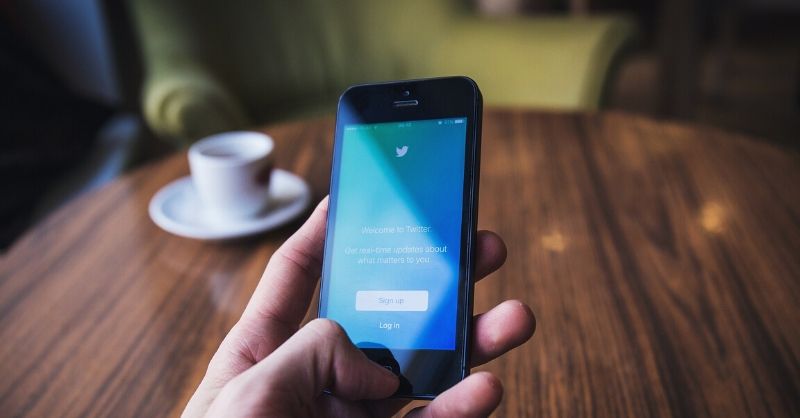Cross-cultural challenges in B2B communication

Table of contents
Times are evolving for B2B communication. As the world depends on video-conferencing amidst the crisis, cross-cultural issues are becoming ever more present.
We are proud to continue the conversation in the Oktopost original discussion series, “The Globalization of Social Media.”
As Charles Darwin once said,
“It is not the strongest of the species that survives, nor the most intelligent that survives. It is the one that is most adaptable to change.”
In our second episode, Kyle Hegarty, known as an expert on cross-cultural leadership, Managing Director of Leadership Nomad and author of the upcoming book, ‘The Accidental Business Nomad’, joins Oktopost’s Managing Director of EMEA, Colin Day, to discuss lessons learned from failures on cultural realities, language differences and the future they have on B2B global communication.
Join the conversation by searching for B2B Marketing Now and subscribing wherever you listen to podcasts. Stay tuned for our next episode.
Listen to the Podcast:
Or watch the live broadcast:
In today’s new normal, whether people wanted to work globally or not, employees are being forced to adapt to a remote lifestyle
This all happened so quickly and by accident. The setup, the situation, the cross-cultural challenges, everyone is in it together. But the reality is nobody is quite trained enough to handle this type of global communication.
Some key takeaways from Kyle Hegerty:
Talk about failures
Working remotely or globally isn’t good or bad. It is simply a way to work.
Right now, disruption is as bad as it can get. Yet, one of the biggest failures today is companies’ unwillingness to talk openly about past issues.
Using this time to understand common and small mistakes that were happening in communication across the company before the crisis, will present an opportunity for companies to improve communication at scale to adapt to our new normal.
The common obstacles for global workers before COVID-19 can teach us a lot about operating in today’s environment.
Over communicate
With social distancing being implemented, people are all very separated. However, social distance is not a new phrase. B2B companies have been struggling with it well before COVID-19.
For example, before shelter-in-place went into practice, conference calls were a popular form of business communication.
People joined the call from all over the world. Some joined remotely, and others called in from the office. Often, teams joined the call, all from the same room. Calling from the same room created a communication advantage. They could chit-chat together before, during, and even after the call.
People are not dumb and other participants on the call know there is chit-chat going on that they are not involved in. People start wondering what they are missing out on, stories build in their head and an ‘us’ vs. ‘them’ mentality begins to form. This is where siloes come in.
While it may sound like “playground stuff”, those little things get in the way of communication.
Now, we have social distancing kicked off massively. There will be significant problems within remote teams with this type of challenge if businesses do not acknowledge this issue.
In the B2B space, internal or customer-facing relationships matter.
To overcome this challenge, teams will have to find ways to overcommunicate. Keeping people informed, included, and engaged is key, but there has to be a balance so as not to overdo it.
Don’t Be a Megaphone
Social media can have an incredibly powerful or hazardous impact on relationship building. Since we have lost the ability to have face-to-face interactions, social media can fill the gap in building meaningful relationships, but only when done right.
When sharing corporate content, for example, make sure the content is relevant and not spam. The content must also be believed in by the employee, otherwise it will not come across as authentic to their audiences.
In addition, when employees share corporate content, they must not be a megaphone. Follow up on all engagement from a post. This is what will foster the relationship.
In these times, thoughtful content that can turn into dialogue, not a one-way communication or just sending out something, is required. Employees need to believe in what they are sending.
When choosing content to share as an employee, you will not come across as authentic if you don’t believe in it or feel it’s just noise.
Understand the B2B social media landscape.
As the world shrinks, localizing messaging and relying on the right digital channels to connect with customers and employees will play an even greater role.
Culture and language barriers will be forefront of B2B digital relationship-building challenges.
For example, a Western country looking to do business in Southeast Asia may need to think more geographically.
Growing a Facebook and YouTube channel may be a main marketing initiative for Western countries. However, YouTube and Facebook do not exist in some parts of Southeast Asia. WeChat is heavily used in China, but it’s much more fragmented in surrounding regions. So, how does this impact the channels for message distribution?
Understanding those regions’ geography, culture, and language will help teams find the proper B2B digital marketing channels to communicate cross-culturally.
Tie everything together
Many worry that inboxes are currently saturated and email is dead. Yes, the ‘spray and pray’ strategy should be killed immediately, but there is still value in email marketing when thrown into the bigger mix for B2B marketers.
While it certainly isn’t a best practice to rely solely on email, it is still recommended to use email lists to understand audiences. Just make sure to integrate email marketing into a larger strategy.
From a marketing standpoint, B2B is all about using the tools we have at our disposal and testing them to tie everything together. The force multiplier is being able to bring all the tools together.
Is this pandemic going to end globalization? Not. If anything, it will make the world more digital, and we need to be prepared.




